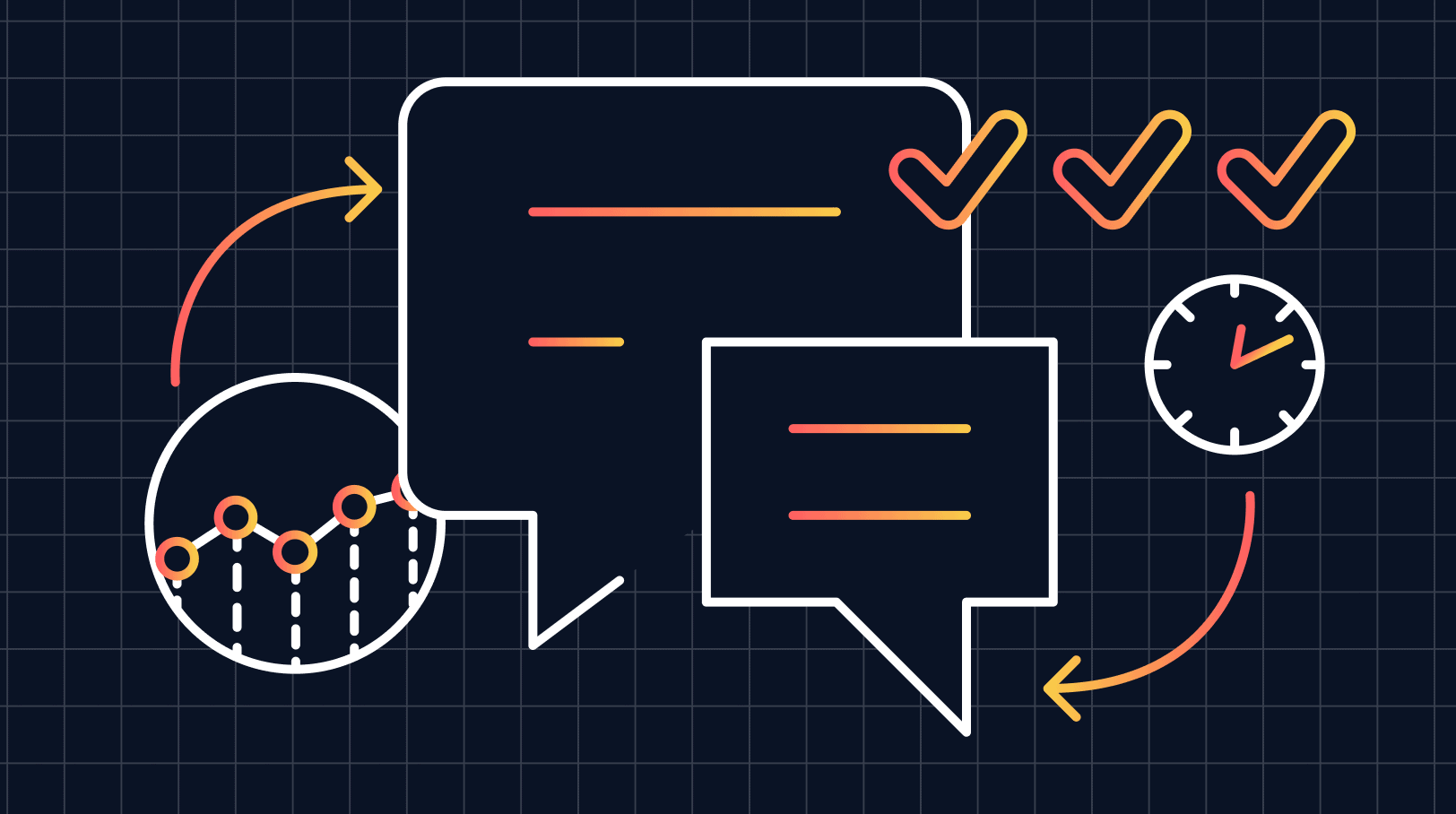Better Customer Engagement: The Power of Timing and Feedback

One of the earliest known documented forms of customer feedback comes in the form of a clay tablet from 1750 BCE. On it, a man named Nanni wrote to complain about the inferior quality of the copper he’d received in his order, as well as the rude treatment experienced by his messengers whom he’d sent to the seller – Ea-nasir – to get a refund from.
At a time when simply sending a message long-distance took an extraordinary amount of time and effort, one needed not only the resources to dispatch that message, but to have been utterly fed up to go to those lengths to make it known. While we’re a long way from clay tablets, centuries later we are still grappling with how best to improve customer experience.
Inspiring customer loyalty can feel elusive—far away from the attainable, repeatable practice that any company strives to put in place. Yet, if we step back and look at the foundations of positive customer experiences, we can find a starting point for successfully cultivating a practice that naturally inspires customer loyalty. One such point lies at the crossroads of timing and feedback.
Effortless customer feedback
Organizations that focus on providing excellent customer experiences don’t just regularly outperform those for whom customer experience isn’t the main priority; they often outperform the S&P 500 and have a 16% price premium on their products and services.
In our Win With Customer Experiences survey, 48% of senior IT professionals noted that developing a better understanding of customer needs helped them to successfully build better customer experiences. There are many ways to do this, from getting out and talking to them, to connecting digitally, and organizations should consider using more than one avenue for feedback.
With the plethora of digital tools at our fingertips today, you’d think that getting customer feedback was an easy thing to do, yet 63% of organizations report that adding more digital touch points meant increased difficulty in maintaining and managing systems. It becomes imperative, then, to ensure that any digital touch points that are added for customer service are the kind that will maximize impact to value. The more easily they connect your customers to you, the more effortless giving feedback will be.
It was at this intersection of seamless connection and maximized value that Mendix focused on creating a solution.
We saw a gap and filled it
One of the founding principles of Mendix was to connect business and IT more closely together – to increase the communication between the two for more effective results. While that still remains the case, we have also found that effective development can increase communication between companies and customers.
When we sat down to consider how and where to best gather customer feedback to make our own platform and apps more efficient, we came to one conclusion: The most logical place for the user to report any issues or suggestions for improvement is in the context where they encountered them. If you’re an ancient Babylonian, that would be when your shipment turns up with subpar goods. If you’re a modern-day human in the digital age, that place would be at the exact moment something goes wrong or doesn’t make sense in the app that you’re using.
Here, the Feedback Feature was born.
From feedback to user story with the click of a button
The value of the Feedback Feature lies in its simplicity for user adoption. When the user encounters an issue, a click of a button allows them to leave feedback. This sort of effortless communication ensures that the development team gets the right contextual information, allowing it to be directly incorporated into the development process for bug fixing and improvement.
Not only are critical issues more quickly addressed this way, but the implementation of new ideas is more closely aligned with what the customer actually wants. The better your timing with feedback, the better your response to customer needs becomes.
Somewhat ironically, one of the most consistent pieces of feedback we received over time was from customers who wanted the ability to implement the Feedback Feature into their own apps. Today, this feature is available in the Mendix Marketplace for those who wish to use it.
Clearing away feedback roadblocks
It’s not uncommon for organizations facing issues with innovation and ideation to invest in expensive programs with the misguided hope that the transformation they’re looking for is simply a purchase away. This largely ignores the reality that innovation tends to come from the people who are around them on a day-to-day basis, whether that be the employees who want to streamline how they do their job or the customers who want better service.
Yet oftentimes, feedback is so difficult to give that most people, when faced with the metaphorical choice of either carrying clay tablets across long distances or accepting subpar results, will choose the latter (or perhaps more realistically, will go elsewhere). If only organizations could effectively tap these natural wellsprings, digital transformation would flow.
Providing users with a way to give feedback at the moment they’re looking to give it, doesn’t just create the sense that their thoughts are valued, it supplies organizations with better data and a solid path to improved customer experience, out of which customer loyalty grows.
